Your Home Office Is Probably a Pain in the Neck (Literally). Here’s How to Fix It.
For years, my entire world was designing huge office spaces for big companies. I was the person working with the architects and managers to create workspaces for hundreds of people at a time, trying to balance budgets with looks and, most importantly, the science of how people work comfortably. I’ve seen what a great setup can do for a company’s success. And oh yeah, I’ve also seen the ugly side of getting it wrong: chronic pain, burnout, and people who just dread coming to work.
In this article
But then, everything shifted. Suddenly, my phone wasn’t ringing with calls from corporations, but from regular people. Folks who were now permanently camped out at their kitchen table or in a spare corner, wondering why their back always hurt and why they couldn’t focus. This guide is basically the cheat sheet I give them. It’s not about trendy decor; it’s about setting up a space that will support you for the long haul, based on principles that actually work.
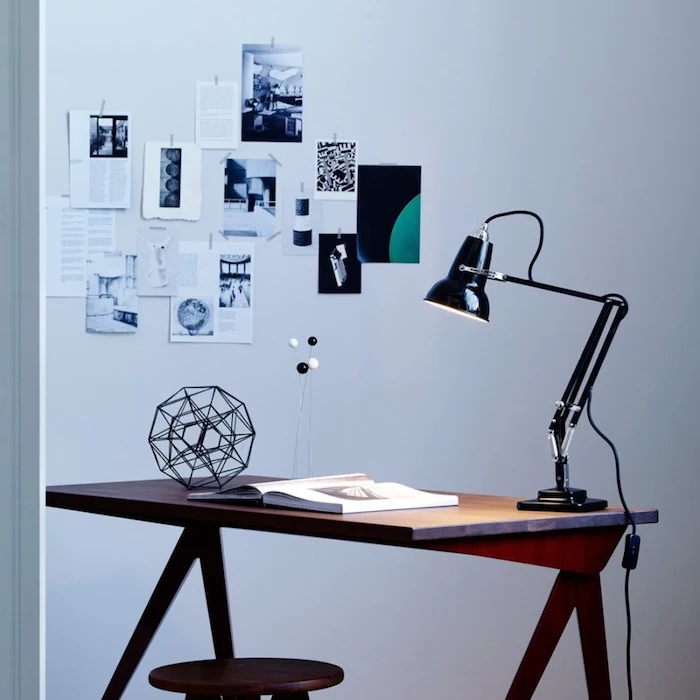
First, Let’s See if This Sounds Familiar…
Before we dive in, let’s get real. Most home office pain comes from a few common, easily fixable mistakes. Here are the top three I see all the time:
- The Dining Chair Disaster: Trying to work all day from a hard, straight-backed chair designed for eating a 30-minute meal. It’s a fast track to back and hip pain.
- The Laptop Hunch: Working directly on a laptop that’s sitting flat on your desk. This forces your head down and forward, creating massive strain on your neck and shoulders.
- The Back-to-the-Window Glare: Placing your desk so a bright window is directly behind you. This creates a horrible glare on your screen, forcing your eyes to work overtime and leading to headaches.
If you nodded along to any of those, don’t worry. We can fix it.
The Real Foundation: Ergonomics First, Pretty Stuff Later
Let’s be completely honest. A beautiful, Instagram-worthy office is great, but a functional one is essential. I’ve seen countless gorgeous setups that were actively causing physical harm. The absolute core of a good home office is ergonomics—which is just a fancy word for designing a workspace that fits you, instead of forcing your body to fit the furniture.
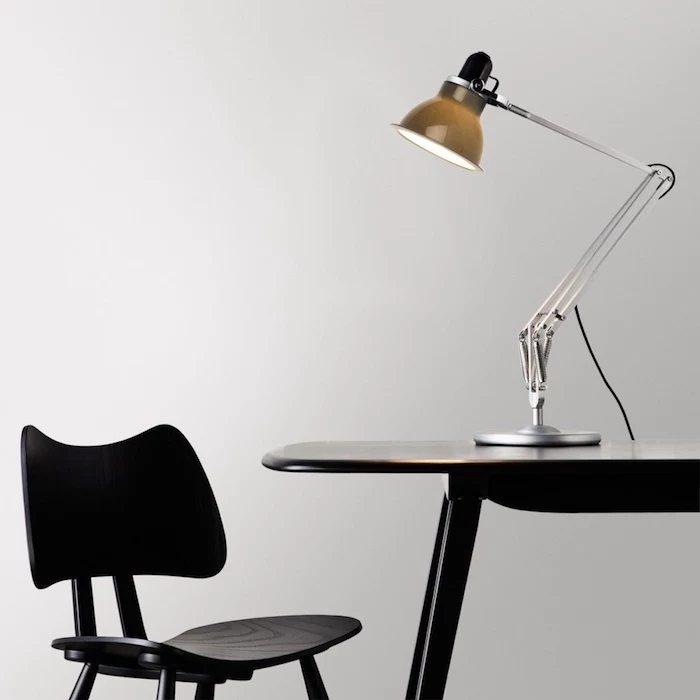
When you get this right, you reduce physical stress, lower your risk of injury, and free up your brain to focus on your actual work, not your aching back. So before you even think about paint colors, we need to nail the three critical points of contact: your chair, your desk, and your screen.
1. The Chair: Your Most Important Investment
If you take away just one thing from this entire article, let it be this: do not cheap out on your chair. A dining chair or a basic, non-adjustable office chair is a recipe for misery. I once helped a graphic designer in his late 20s who was dealing with awful sciatica. The culprit? Eight hours a day perched on a stylish but unforgiving wooden chair. A proper office chair isn’t a luxury; it’s a professional tool.
What Makes a Chair “Good”?
It’s all about adjustability. Your body is unique, so your chair needs to adapt. Here are the non-negotiables to look for:
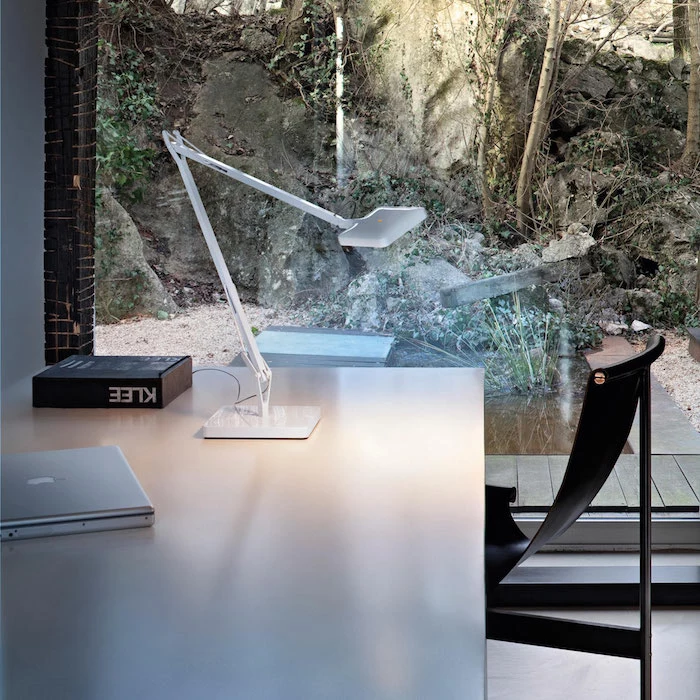
- Seat Height Adjustment: This is the big one. You need to be able to sit with your feet flat on the floor (or a footrest) and your knees at a roughly 90-degree angle.
- Seat Depth: This is so often overlooked! You should have a gap of two or three fingers between the edge of the seat and the back of your knees. Too deep, and it presses on nerves; too shallow, and your legs aren’t supported.
- Adjustable Lumbar Support: Your lower back curves inward. Good chairs have a support that moves up and down (and sometimes in and out) to fit perfectly into that curve.
- Adjustable Armrests: These take the load off your shoulders. You want them at a height where your shoulders are relaxed and your elbows are bent at about 90 degrees.
- Recline and Tension: Being able to lean back and shift your position is key. The tension knob lets you set how much effort it takes to recline, so you feel supported.
So, what does this cost? Expect to pay between $300 and $500 for a solid, new ergonomic chair with these adjustments. But here’s the best pro tip I can give you: look for used high-end chairs from professional brands. You can often find them on Facebook Marketplace or at office furniture liquidators for $250 to $450. They’re built to last for decades, so a used one is often a much better value than a cheap new one.
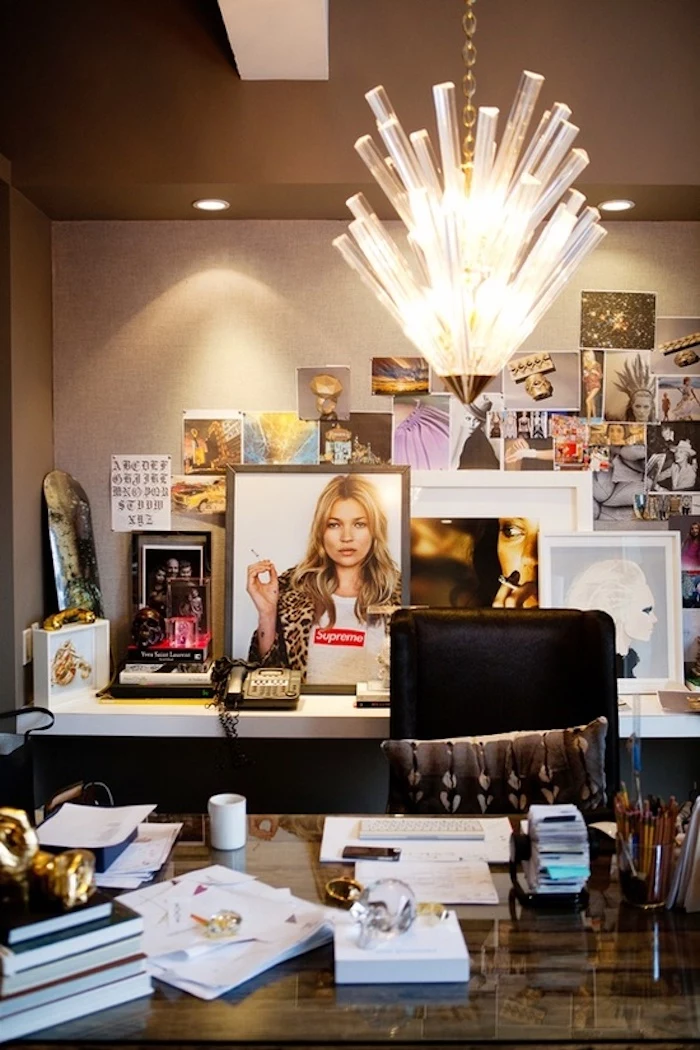
2. The Desk: Your Command Center
Once your chair is set, the desk is the next piece of the puzzle. The goal is to have your keyboard and mouse at a height where your forearms are parallel to the floor and your wrists are straight. A standard desk is about 29-30 inches tall, which is actually too high for many people once their chair is at the right height.
If you find yourself reaching up to type, you’ve got a couple of great options:
- The Budget-Friendly Fix: A Keyboard Tray. For about $50 to $150, you can get a good articulating keyboard tray that mounts under your desk. It’s a fantastic way to get your keyboard and mouse to the perfect height without replacing your whole desk.
- The Upgrade: A Sit-Stand Desk. These are a game-changer. An electric adjustable desk lets you find the perfect height for both sitting and standing. A word of warning, though: standing all day is just as bad as sitting all day! The magic is in switching it up. Try to work for 50 minutes sitting and then 10 minutes standing.
Oh, and what if your desk is too low? That’s a common issue for taller folks. The easy fix is a set of desk risers—they’re basically sturdy blocks that go under the desk legs. You can find them online for about $20.
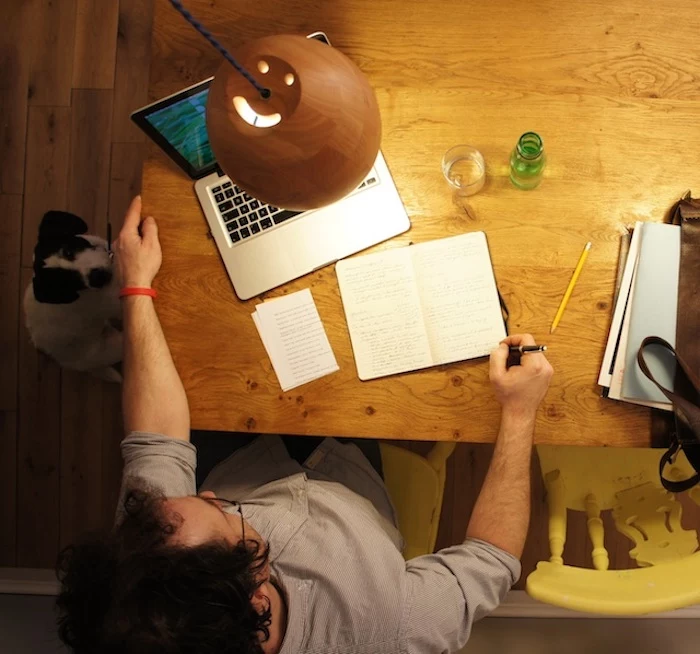
Quick Tip: Organize Your Desk Like a Pro
Here’s a little trick from the world of high-stakes trading floors, where every second counts. Think of your desk in zones. Your Primary Zone (right in front of you) is for your keyboard and mouse ONLY. Your Secondary Zone (an easy arm’s reach away) is for your drink, phone, or a notepad. Everything else—staplers, lamps, decorations—goes in the Tertiary Zone at the outer edges. This simple habit minimizes twisting and reaching, which really adds up over a day.
3. Your Screen & Lighting: Protecting Your Eyes and Neck
Ever get that nagging pain at the base of your neck or finish the day with tired, scratchy eyes? It’s almost always your monitor placement and lighting. Imagine holding a bowling ball. Holding it close to your body is easy. Holding it out in front of you is exhausting. That’s what you’re asking your neck muscles to do when you hunch over a low screen.
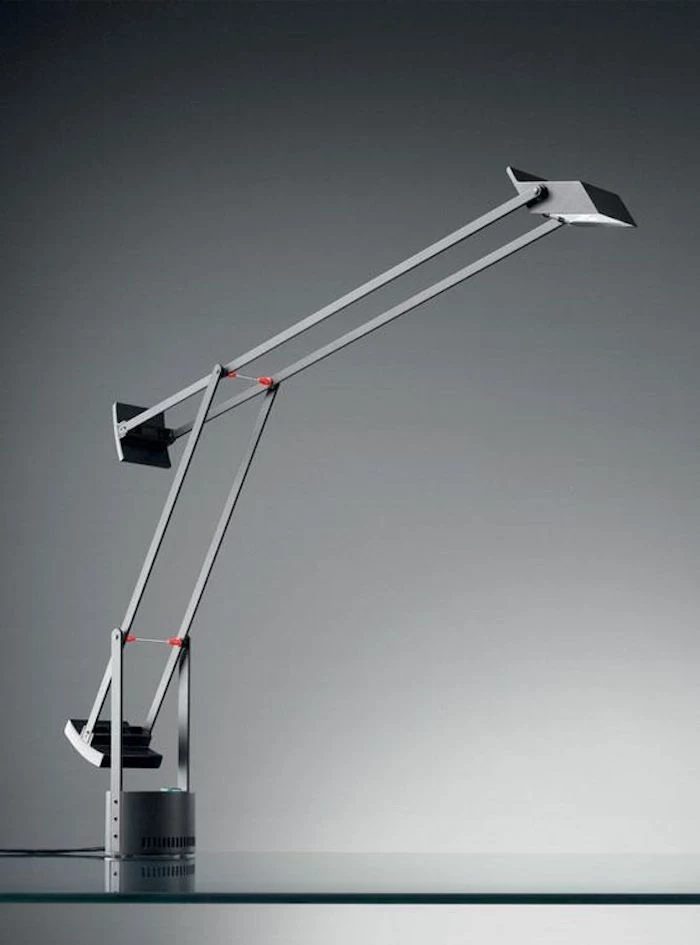
Here’s how to fix it right now:
- Height: The top edge of your screen should be at or just below your eye level. If you’re on a laptop, you absolutely need an external keyboard and mouse. Then, put that laptop on a stand or a stack of thick books to get it to the right height. Seriously, pause and do this now. You’ll feel the difference immediately.
- Distance: The screen should be about an arm’s length away. If you have to lean in to read, just increase the font size on your computer.
- Lighting: Try to put your desk parallel to a window, not in front of or behind it. Side light is best for avoiding glare. Then, add a dedicated desk lamp to light up your workspace.
Heads up on lighting: cheap LED bulbs can have an invisible flicker that causes major headaches. A quick trick to check for this? Point your phone’s slow-motion video camera at the light source. If it’s flickering, you’ll see it clearly on your screen. It’s worth spending $30 to $70 on a quality, flicker-free LED task lamp.

4. The Extra Mile: Sound, Air, and Flow
Got the basics down? Awesome. Now let’s fine-tune the space.
Hard surfaces like wood floors and bare walls make sound bounce around, which is distracting and makes video calls sound echoey. The fix is easy: add soft things! An area rug, some curtains, or even a fabric pinboard will absorb a ton of sound and make the room feel much calmer.
And don’t forget about air. In a small, closed-off room, the CO2 from your own breathing can build up and make you feel drowsy and unfocused. Try to crack a window for a few minutes every hour. If you can’t, a small air purifier can work wonders. By the way, for about $30 to $50, you can get a little CO2 monitor online. It can be a real eye-opener.
Okay, Let’s Talk Money: A Realistic Shopping List
To pull this all together, here’s a rough idea of what you might need to budget. Remember, you don’t need everything at once, and you can often find great deals secondhand.
- Ergonomic Chair (The Non-Negotiable): $300+ (new) or $250+ (used high-end)
- Laptop Stand / Monitor Riser: $20-$60 (or free if you use books!)
- External Keyboard & Mouse: $50-$100 for a decent set
- Flicker-Free LED Task Lamp: $30-$70
- Footrest (if needed): $20-$40
A Final Word…
Look, this guide is a framework, not a medical prescription. If you’re in real, persistent pain, please go see a doctor or physical therapist. They can give you advice tailored specifically to you.
Building a proper home office is an investment in your health, your comfort, and your career. It takes a little thought and maybe a bit of cash, but the payoff is huge. It’s the freedom to work for hours without pain, to focus deeply, and to end your day with energy left for the rest of your life. You deserve a workspace that works for you, not against you.
Inspirational Gallery
The Chair Showdown: Splurge vs. Save
Splurge: The Herman Miller Aeron chair is the icon for a reason. Its mesh material conforms to your body, offers customized lumbar support, and is built to last for decades. It’s a significant investment, but it’s also an investment in your long-term health.
Save: The IKEA Markus offers remarkable ergonomic value for its price. It features a high, breathable mesh back and basic lumbar support. It lacks the micro-adjustments of a high-end chair, but it’s a massive leap forward from a dining chair.
For many, the Markus is the perfect entry into ergonomic seating without breaking the bank.
More than just an ache: A study in the International Journal of Environmental Research and Public Health found that over 50% of home-based workers reported an increase in musculoskeletal pain, with the lower back and neck being the most common areas.
This isn’t just a comfort issue; it’s a long-term health crisis in the making. Your body keeps the score. Investing in a proper setup isn’t a luxury, it’s preventative care for the modern worker, protecting you from chronic issues down the road.
Fighting for every square inch? You can still create an ergonomic oasis. It’s all about going vertical and being clever with your space.
- Use wall-mounted shelves above your desk for books and supplies to free up surface area.
- Opt for a floating desk that mounts directly to the wall, saving precious floor space.
- A monitor arm, like those from Ergotron or AmazonBasics, lifts your screen off the desk, giving you back valuable real estate underneath.
- Choose a slim-profile chair that can tuck completely under the desk when not in use.
Is your office lighting causing eye strain you don’t even notice?
The overhead room light is not enough. To combat digital eye strain and headaches, you need dedicated task lighting. Forget a traditional desk lamp that creates glare on your screen. The new standard is a monitor light bar, like the BenQ ScreenBar, which sits on top of your monitor and casts light down onto your desk without illuminating the screen itself. It creates a perfectly lit, glare-free zone for your keyboard and papers, making a huge difference during late-night work sessions.
- Reduced anxiety and mental fatigue.
- A subtle boost in focus and concentration.
- A more grounded, calming work environment.
The secret? Biophilic design. This simply means incorporating natural elements into your space. A few low-maintenance plants like a Snake Plant or Pothos can improve air quality and have a proven psychological benefit, making your office a place you actually want to be in.
A tangled mess of cables under the desk is the number one enemy of a calm and functional workspace.
It’s not just ugly; it’s a dust magnet and a tripping hazard. Tame the chaos with a dedicated cable management tray that screws to the underside of your desk. Combine this with reusable velcro ties to bundle cords together. For less than $30, you can transform your digital rat’s nest into a clean, organized, and stress-free zone.
Don’t forget your wrists and hands! The standard keyboard and mouse force your hands into an unnatural pronated position. If you feel tightness or pain in your forearms, it might be time to switch.
- A vertical mouse, like the Logitech MX Vertical, keeps your hand in a more natural
Important point: Your feet should always be flat on the floor. If adjusting your chair to the right height for your desk leaves your feet dangling, you absolutely need a footrest. This supports your posture and prevents pressure on the back of your thighs, which can restrict blood flow. You don’t need anything fancy—a dedicated ergonomic footrest, a small stool, or even a yoga block will do the trick.
Can the color of your office really affect your work?
Yes, but not in a magical way. Color psychology suggests that certain hues can influence mood and focus. For a workspace, steer clear of high-energy reds or yellows. Instead, consider shades of blue or green. Blue is associated with focus and intellect, while green is linked to balance and calm. A soft sage green or a muted navy blue accent wall can help create a serene and productive atmosphere without being distracting.










